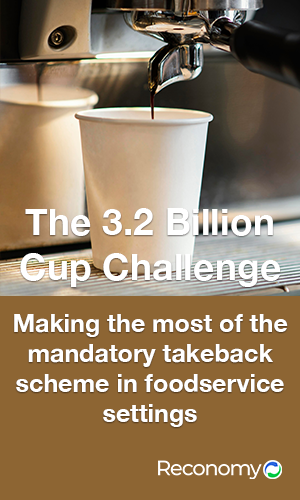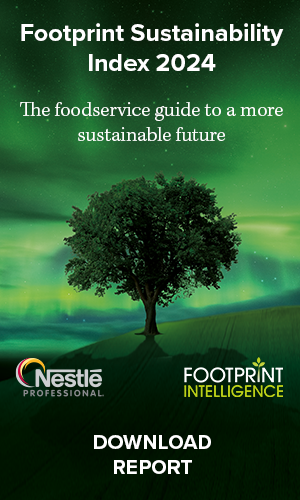In the post-Blue Planet era of anti-plastic sentiment, dubious claims regarding biodegradability and sustainability are on the rise, finds David Burrows. But are companies being crafty or just confused?
Last year, Ancol Pet Products ran the following claim on its website for a product it was selling: “Refill Poop Bag Rolls … These thick waste bags are biodegradable to lessen your dog’s impact on the environment.” As it turns out, the claim was crap. Following a complaint made to the Advertising Standards Authority (ASA), Ancol couldn’t actually prove the product is biodegradable. “No testing or evidence of the claims had been provided to demonstrate the bags’ ability to biodegrade,” the ASA ruled, which meant the company was in breach of UK advertising codes and had to remove the advert. In other words, it was greenwash.
A company creating false or misleading marketing to promote a product, service or brand as more eco-friendly than it really is, is nothing new. However, this particular case, highlighted by Footprint at the time, is significant – because in the post-Blue Planet era of anti-plastic sentiment, dubious claims regarding biodegradability and sustainability are on the increase. Indeed, the question begs: has David Attenborough inadvertently fuelled a surge in greenwashing and if so how can it be stopped?
According to the Oxford Dictionary, greenwash is “disinformation disseminated by an organisation so as to present an environmentally responsible public image”. A decade or so ago it was a big problem and regulators were struggling to keep up. “This is new, almost virgin territory for us,” admitted Chris Smith, a former Labour minister and chairman of the ASA at the time. “We are breaking new ground and this is a growing area, as we are increasingly finding that advertisers are using green claims to sell their products and services and to give them an edge over their rivals.”
In 2006, for example, the ASA received 117 complaints about the environmental claims in 83 adverts. A year later, it was 561 complaints about 410 adverts, as the likes of Suzuki, Shell, Ryanair and Toyota were all censured. In their desperation to be seen as green, many companies were quickly tarred with the same greenwash brush, but it wasn’t always deliberate. “Most greenwash is due to ignorance and/or sloppiness rather than malicious intent,” noted Futerra in its guide to the subject.
Still, it was easy for campaigners to identify any bad apples, flag them to the ASA and before long the stories would be splashed across the newspapers. The Guardian had its own dedicated email on the subject, whilst Greenpeace launched a stopgreenwash.org website. There were so many green watchers waiting to leap on every false claim that “woe betide those who spin a story”, noted the foreword in Chris Arnold’s book Ethical marketing and the new consumer in 2009.
In fact, in the space of a couple of years, companies became so fearful of falling foul of the rules and “killer” publicity that the number of complaints quickly began to dry up. ASA figures published in Marketing magazine at the end of 2009 showed that 158 ads referencing the environment had attracted complaints so far that year, compared with 264 for the whole of 2008. Was the initial “flurry” of green claims simply a reflection of early “quick wins” which required little in the way of genuine product or brand shifts? Maybe companies just cleaned up their acts? Or had the sustainability theme fallen out of fashion following the recession?
It was probably a mixture of all three. But almost 10 years on and environmental issues are back in vogue, thrust into the social and political spotlight thanks to plastic consumption and pollution. As The Guardian noted recently: “… the public backlash has undoubtedly brought a serious environmental problem to the attention of the highest level of government and business, and convinced them it is a winning issue.”
Indeed, fail to act on plastic and you are labelled a loser – or worse, a sinner. Once again, businesses (and politicians) are desperate to be seen as green and are making the same mistakes. Some fibs, like those poo bags, have already been exposed. There has also been the case of the “recyclable” single-use paper cups: only 1 in 400 were actually found to be recycled. The exposure has given industry a kick, but a new figure of 1 in 25 cups recycled puts a positive spin on what is ostensibly a recycling rate of just 4%. Indeed, increased recyclability and recycling claims have attracted the loudest cries of greenwashing from NGOs, says Robert Blood from campaign tracking firm Sigwatch. “They are pushing industry to accept [reduced use rather than increased recycling] as the proof point of sustainability.”
Interest in compostable packaging has also surged on the back of the anti-plastic tide, with companies eager to switch to what is often pitched as a “more sustainable” option. Straws are a notable example: some of the largest firms in the foodservice and hospitality sector have ditched plastic straws in favour of “eco-friendly” alternatives like paper and compostables, but with little thought about where the items are ending up.
A Footprint investigation into the pledges being made to replace plastic straws found that the rhetoric doesn’t yet match the reality, with compostable straws ending up in landfill or incinerators. That it was one of the most read pieces ever shows just how confused people are. “I’m not sure that some of the companies understand the full value chain impacts of their decisions,” Stuart Hayward-Higham, technical development director at waste management group Suez, told me recently.
Using plastic doesn’t look good, but what does “good” look like? This can be hard to determine and very circumstance dependent, admits Mark Hilton, head of sustainable business at Eunomia, an environmental consultancy that has been working with a variety of global brands on their plastics strategies. “There’s a lot of confusion about which materials to use. It’s not confined to food and drink either,” he adds. “In fashion, for example, claims are often made about bamboo and other cellulose-based fabrics that are too simplistic in that they often ignore the chemically-intensive manufacturing impacts.”
Many of Eunomia’s clients are considered in their approach and want science-based advice before they make a move; but there are plenty of others that have gone ahead and publicised their initiatives without understanding all the pros and cons. The use of terms such as “sustainable” and “degradable” remains common without any real justification, Hilton adds. Many will also fly well under the radar of the ASA. So, what can companies do to steer clear of greenwash?
As far as the rules on green marketing are concerned there are three golden ones, one of which is to avoid the use of vague terminology. An example might be “eco”. “Biodegradable” also fits the bill, and there is growing support for brands to ban the word in reference to packaging. The description is “misleading for the public, many of which erroneously believe it is acceptable to litter biodegradable packaging”, the Foodservice Packaging Association has argued.
The other two rules are: make sure it’s not misleading (for example, comparisons with other products must be fair, and any pictures used must relate directly to the benefit you’re claiming); and stick to “objective and transparent” data (for example, consider the whole life cycle of the product). Soda Stream, for example, used a certification from the Carbon Trust – which compared the carbon footprint per 250ml of sparkling water produced using its home drinks maker with the same amount of bottled sparkling water – to convince the ASA that the phrase eco-friendly was actually justified in a green marketing video it produced in 2016.
How many businesses adhere to these rules is a moot point – especially when there’s a bandwagon steamrolling through the corporate sustainability space. An analysis for the Department for Environment, Food and Rural Affairs (Defra), in 2010 showed that, of 4,492 claims made across 3,234 items (both products and services) in 32 sectors, one in 10 were “general” and “non-specific” (for example, using the term “eco-friendly” without any support or certification). That wasn’t on, so in 2011 the (coalition) government at the time updated its guidance to companies making claims. It ran to 40 pages, advising firms on everything from the use of images (don’t use forests and endangered species unless they are relevant) to carbon neutrality. However, there was little specific help for those advertising online.
Fast-forward seven years and the guidance has been slimmed down to a single page on the department’s website. Hardly sufficient, surely, given how the marketing landscape has changed with digital tech and algorithms having taken over. As Solitaire Townsend, co-founder of the sustainability consultancy Futerra, put it in a New Year blog for Forbes in 2018: sustainability must live on social media. Indeed, thousands of sustainability reports are published every year packed with social and environmental revelations, yet most are buried away in ancient formats or on sub-sub-pages of the corporate site. “It’s almost as if those answers are deliberately hidden from the young consumers asking the questions,” Townsend noted. Once bitten, twice shy perhaps?
Greenwashing is apparently “rampant” in the field of sustainability reporting, according to Hans Hoogervorst, chair of the International Accounting Standards Board. “We should not have exaggerated expectations about sustainability reporting as an agent for change,” he said in a speech last month at Cambridge University. “Let us not forget that full transparency did little to curb excess in corporate remuneration. Equally, we should not expect sustainability reporting to be very effective in inducing companies to prioritise planet over profit.”
Hoogervorst cited the example of VW, which was leading the Dow Jones sustainability index’s automotive sector when the emissions scandal broke. The DJSI often leaves campaigners scratching their heads at some of the scores – in 2017, for example, Nestlé was top of the table amongst food manufacturers with 92 out of 100, including a perfect mark for packaging. This is a company that, together with Coca-Cola and PepsiCo, accounts for 45% of the plastic pollution found in Europe.
To be fair, progress is happening fast thanks to pressure from the public and politicians – and with every damning story of pollution there is another highlighting corporate leadership. Indeed, plastic has given many brands the confidence to talk publicly about sustainability again. In opening up they once again run the greenwash gauntlet, of course.
A case in point is PepsiCo, which in March produced a press release boasting that half a million crisp packets had been recycled since the start of its collection scheme in December 2018. The plastic could produce 250 park benches. Campaigners were quick to jump on the statistics. The results must be taken with a pinch of salt, said 38 Degrees’ David Innes, given that Walkers produces 11 million crisp packets every day at its Leicester plant. “We’re aware the 500,000 figure is therefore very small compared to production – this is why Walkers is using this moment to encourage more people to get involved and recycle their crisp packets,” a spokesperson told Footprint.
It’s fairly obvious that brands need to tread very carefully – more so today than the previous era of greenwash 12 years ago. Consumers – especially the younger ones reared on Twitter, Instagram and the like – are more savvy, more critical and more demanding than ever, says Joss Ford, founder of marketing and communications agency Enviral. “People share things that are amazingly good or amazingly bad – that’s contagiousness.” What represents good or bad remains far from clear-cut, however, which means that dirty word, greenwash, is back in play.
This article is an updated and adapted version of one originally published in IEMA’s publication Transform in February 2019.














